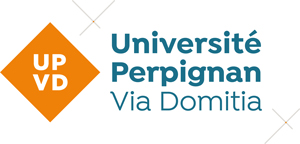Terms of recognition of the study period or work period abroad:
Mobility within the Erasmus+ international Credit mobility program is based on the principle of recognition of the study period in the frame of the curricula prepared in the home university, thanks to the ECTS system (European Credit Transfer System).
This validation is based on a learning agreement (including the list of the courses followed and credits) previously signed between the two partner High Education Institutions and the student. This educational contract implements the European Credit Transfer System (ECTS).
The UPVD uses the ECTS and tools developed by the Bologna Process (transcript of records, learning agreement and Diploma Supplement).
With partners not using ECTS UPVD uses a compatible system, including a conversion table in order to allow transparently recognition of the study period / placement spent abroad.
ECTS Grading Scale:
| A | Excellent - 10% of the best |
| B | Very Good - 25% of the following |
| C | Good - 30% of the following |
| D | Satisfactory - 25% of the following |
| E | Fair - 10% of the remaining |
| FX | Fail - Poor |
| F | Fail - Very poor |
ECTS provides transparency by using the following instruments:
- ECTS Credits : These are in the form of a numerical value assigned to each course unit, and represent the volume of work that the student is required to complete for each one. They reflect the quantity of work each course unit requires in relation to the overall volume of work necessary to complete a full year of study at the institution, that is to say: lectures, practical work, the seminars, internships, research or field research, private study - in the library or at home - and examinations or other assessment methods possible. They are based on the volume of work of the student and are not solely limited to the hours of attendance. 60 credits represent the workload of a year of study, 30 credits those of one semester.
- The transcrips of records : It presents the academic performance of the student in a clear, comprehensive and understandable way. It should be easily transferable from one institution to another.
- The learning agreement and the work plan : They fix in written form the objectives of the mobility depending on scholarship holder education. These contracts determine the courses and research project that must be followed at the host university. They must be validated and signed by the pedagogical supervisors at the home university, the host university, as well as the scholarship holder. The learning agreement is for the students’ academic recognition at an undergraduate and master level. For doctorates and staff, there are the research or work/teaching plans.
- The diploma suplement : It describes the knowledge and skills acquired by the student (nature, level, content, etc.) during her/his university studies in order to graduate.
Mise à jour le 24 août 2023









